It's Time To Replace Your Knee Sleeves With These Knee Brace Compression Pants

What are the benefits of wearing compression knee sleeves?
Knee injuries are, unfortunately, all too common in sports. As a preventative measure, some athletes will turn to knee sleeve protection to reduce their risk of getting injured. Others wear knee compression devices to relieve pain, control swelling and inflammation, and experience added joint support.
Traditionally, there have been 3 types of knee compression available to athletes looking for varying degrees of warmth, stability and support.
Cloth Knee Sleeves are the thinnest type of knee sleeve available. They provide mild compression and some warmth to the joint and surrounding muscles. A cloth knee sleeve can be made from any number of materials including polyesters, cotton, acrylics, and will usually contain Lycra or spandex for their elasticity. They provide limited injury protection and knee support.
Neoprene Knee Sleeves are more substantial than cloth knee sleeves and come in a variety of thicknesses. Neoprene sleeves, such as the Rehband Knee Sleeves, are a popular choice for powerlifters and CrossFit enthusiasts. Although much bulkier than a cloth knee sleeve, a neoprene knee sleeve provides improved knee stability along with more warmth and greater injury prevention, which makes them a staple in weightlifting and CrossFit gyms.
Knee Wraps are typically worn for performance and heavy powerlifting. Wraps provide extreme compression but can also be cumbersome and require significant attention. They are best used during short periods of intense activity, such as lower bodybuilding exercises such are squats and deadlifts.
How do you stop your knee sleeves from rolling down?
Most athletes in need of knee compression find themselves choosing between the first two alternatives: cloth knee sleeves or neoprene knee sleeves. One of the biggest problems with all these knee sleeve options is that they tend to roll down and require continual adjustment. To solve this problem, some people turn to wearing compression tights with knee sleeves on top — and have limited success.
Is it OK to wear knee sleeves on top of compression pants?
Yes, it is. But now, there is a much better option!
Bracelayer's knee brace pants provide all of the benefits of traditional compression tights along with the warmth and stability found in neoprene knee sleeves, all while maintaining a low profile.

Our compression pants are moisture-wicking and have anti-bacterial properties to keep you feeling fresh and odor-free. Around the knees, hips, and along the IT band is a thin layer of perforated neoprene to provide targeted compression, stability, and warmth to active and recovering knees. Since the perforated neoprene is only 1.5 mm to 2mm in thickness, the brace layer of our compression pants is thin enough to wear under custom knee braces or knee wraps.
So stop playing around with individual knee sleeves and get the all in one solution — Bracelayer® Knee Brace Pants!

Bracelayer® Knee Stabilizing Compression Pants have medical grade ventilated neoprene knee sleeves built into each leg.
Bracelayer® knee brace pants are the all in one solution for athletes looking to replace their knee sleeves. Bracelayer® compression tights have medical grade ventilated neoprene built right into each knee. They are built on a moisture-wicking and anti-odor Stabiluxe™ base. They also pair great with custom knee braces.

















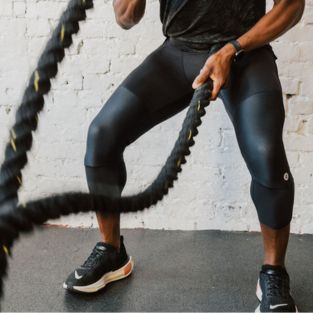
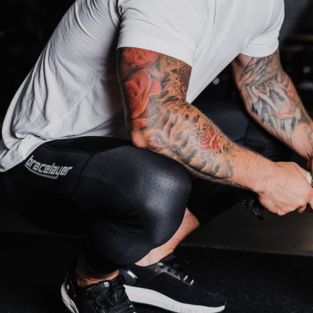
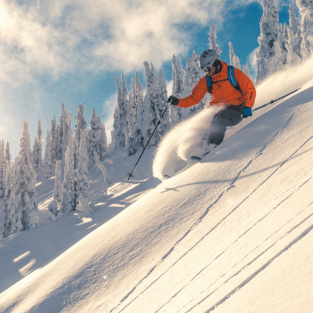
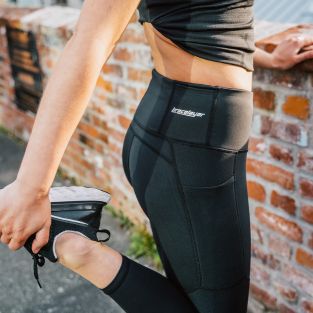
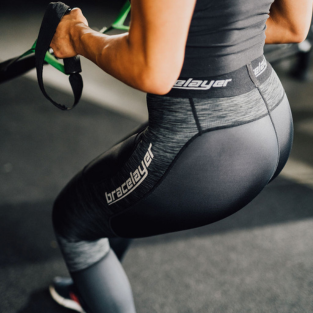

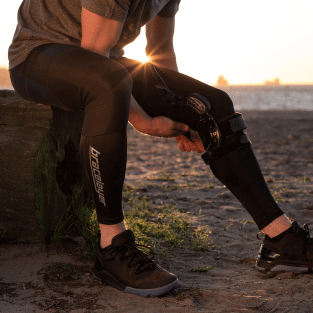
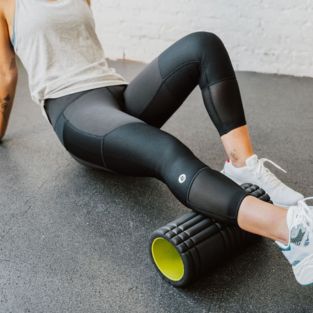
The bracelayer compression pants with the ventilated neoprene mesh on the knee is a must have. It reduces my knee pains and actually do help me to move painlessly. I wear them to excercise, biking and running, and sometimes I sleep wearing them. The compression and the heat it generates on knees both aliviate pain and help me keeping active m I recommend this product.
Leave a comment